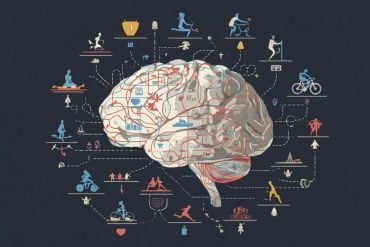Research has shown that nutrition plays an important role in the rapid structural development of the brain during the first few months of life. Scientists at the University of Illinois interested in this connection have studied the neonatal piglet as a model of human brain and cognitive development for nearly a decade.
Though human breast milk is generally considered the optimal source of nutrition for infants, in some cases, breastfeeding is not possible. Therefore, makers of pediatric nutrition products have sought to understand more about the components in human milk and their impact on the growth and development of infants and children.
A recent study from U of I found evidence that a novel combination of prebiotics, milk fat globule membrane (MFGM), and lactoferrin added to a DHA- and ARA-containing formula fed to piglets, advanced overall brain development compared to piglets who were fed a formula containing only DHA and ARA (both omega fatty acids that are now standard in infant formula).
Ryan Dilger, a U of I assistant professor of nutritional sciences and a co-author of the study explained that MFGM and lactoferrin are naturally present compounds in human and bovine milk. Independently, these compounds have been reported to have positive effects on brain development of rodents and piglets. Dietary prebiotics were also included based on recent evidence that prebiotics’ impact on the intestinal microbiome has some effect on the development of the enteric and central nervous systems.
“This study is building on research that has been done for the last 15 years,” Dilger said. “We have known that DHA is good, and now we are asking how we can help DHA further support brain and eye health. This study is adding novel nutritional technologies on top of existing technologies. It’s taking a complex approach and it’s really the combination of these ingredients that is special.”
Austin Mudd, a doctoral student and lead author of the study, said the work is also novel because they added the compounds in a way that closely mimics human milk. “And that’s ultimately the goal of early life nutrition, especially in developing infant formula, to get it as close to human milk as possible.”
The researchers pulled their evidence from results of magnetic resonance imaging (MRI), performed on piglets at 30 days of age after the piglets had been fed either a test diet (supplemented) or a control diet (DHA and ARA only). Dilger and his team also did behavioral testing of spatial memory with the piglets in a specially designed T-maze. Although they didn’t see large effects from the behavioral testing, Dilger said they saw significant effects on brain development from the neuroimaging piece.
Mudd said the most exciting difference they saw in the brain images of the piglets is that myelination appeared to be occurring at a faster rate in the piglets who had been fed the supplemented diet. Myelin is a fatty substance that acts as insulation for axon “tubes,” which transmit information to different neurons. Rapid myelination during infancy plays an important role in a child’s development, such as learning to walk and talk during the first years of life.
“The differences we saw indicated that myelination was occurring at a faster rate,” Mudd said.
“We know that the MFGM ingredient in particular contains very specialized forms of lipids, some of which are also found in myelin. This tells us that MFGM could be what is causing that increased myelination, but further testing would be required to verify this. Myelin is a fatty membrane that wraps around the axon, so providing those extra fats and possibly helping them get into the brain easier could be what is causing the advanced myelination that we observed,” he added.
Another exciting finding to the researchers was that the differences they saw were taking place in the internal capsule region of the brain (a white matter structure of the brain). Mudd said other recent studies have shown that this region is impacted by nutritional interventions.
“The internal capsule is one of the earliest maturing brain regions. It connects sensory and motor input to the rest of the body,” Mudd explained. “If you think about the early stages of development, when a baby first starts to reach for things, this could be because of the early maturing nature of the internal capsule.”
Using diffusion tensor imaging, an MRI technique to measure axons in the brain, the researchers saw that the piglets on the supplemented diet had a decrease in radial diffusivity (RD) in the internal capsule. Decreased RD suggests greater axonal insulation, suggesting more restricted water movement often due to myelinating events. “We saw in this study that the supplemented diet is actually impacting the internal capsule, and a decrease in the radial diffusivity is pretty indicative of increased myelination. So that’s why we’re pretty excited,” Mudd added.
Despite the promising findings, Mudd said some of the MRI data are harder to interpret. “Where we saw the differences occurring in the brain is pretty close to sensory and motor regions, which would fall in line with what we’re suggesting about the internal capsule because it’s connected to those regions. It’s visual observation, putting a story together. I think we have a solid story.”

Dilger said this sets the hypothesis for further studies. “Data lead us to the point that it has to do with myelination, therefore we’re developing the next hypothesis for measuring around radial diffusivity. We don’t have a direct measurement of myelination yet in this study,” he said.
Mudd added, “What’s interesting is the fact that the differences we are seeing in the internal capsule at a four-week time period in a pig is directly related to what you would see in an infant. One week of brain development in a pig is equivalent to one month of brain development in an infant. There are actually several published papers that show the internal capsule is developing in that three- to four-month time period. Other brain regions aren’t beginning myelination until six months. It’s possible if we had studied these pigs out to six weeks we might have seen a more global impact with these diets.”
Other future research will focus on more sensitive behavioral testing with piglets, and nutrition’s impact, at the Piglet Nutrition and Cognition Lab at U of I.
This article was submitted directly to NeuroscienceNews.com by Austin Mudd. We would like to thank Austin for this research article.
Funding: Funding was provided by Mead Johnson Nutrition.
Source: Stephanie Henry – University of Illinois
Image Source: The image is adapted from the University of Illinois press release.
Original Research: Abstract for “Dietary Prebiotics, Milk Fat Globule Membrane, and Lactoferrin Affects Structural Neurodevelopment in the Young Piglet” by Austin T. Mudd, Lindsey S. Alexander, Kirsten Berding, Rosaline V. Waworuntu, Brian M. Berg, Sharon M. Donovan and Ryan N. Dilger, in Frontiers in Pediatrics. Published online February 4 2016 doi:10.3389/fped.2016.00004
Abstract
Dietary Prebiotics, Milk Fat Globule Membrane, and Lactoferrin Affects Structural Neurodevelopment in the Young Piglet
Introduction: Milk fat globule membrane (MFGM) and lactoferrin have been identified as two components that have potential to affect neurodevelopment. While concentrations of some MFGM constituents in infant formulas are within human milk range, they may not be present at optimal or clinically effective levels. However, lactoferrin levels of infant formulas are consistently reported to be lower than human milk. This study sought to provide a novel combination of prebiotics, bovine-derived MFGM, and lactoferrin and assess their influence on neurodevelopment.
Methods: Twenty-four male piglets were provided either TEST (n = 12) or CONT (n = 12) diet from 2 to 31 days of age. Piglets underwent spatial T-maze assessment starting at 17 days of age, were subjected to magnetic resonance imaging at 30 days of age, and were euthanized for tissue collection at 31 days of age.
Results: Diffusion tensor imaging revealed differences in radial (P = 0.032) and mean (P = 0.028) diffusivities in the internal capsule, where CONT piglets had higher rates of diffusion compared with TEST piglets. Voxel-based morphometry indicated larger (P < 0.05) differences in cortical gray and white matter concentrations, with CONT piglets having larger tissue clusters in these regions compared with TEST piglets. In the spatial T-maze assessment, CONT piglets exhibited shorter latency to choice compared with TEST piglets on day 2 of acquisition and days 3 and 4 of reversal.
Conclusion: Observed differences in microstructure maturation of the internal capsule and cortical tissue concentrations suggest that piglets provided TEST diet were more advanced developmentally than piglets provided CONT diet. Therefore, supplementation of infant formula with prebiotics, MFGM, and lactoferrin may support neurodevelopment in human infants.
“Dietary Prebiotics, Milk Fat Globule Membrane, and Lactoferrin Affects Structural Neurodevelopment in the Young Piglet” by Austin T. Mudd, Lindsey S. Alexander, Kirsten Berding, Rosaline V. Waworuntu, Brian M. Berg, Sharon M. Donovan and Ryan N. Dilger, in Frontiers in Pediatrics. Published online February 4 2016 doi:10.3389/fped.2016.00004







